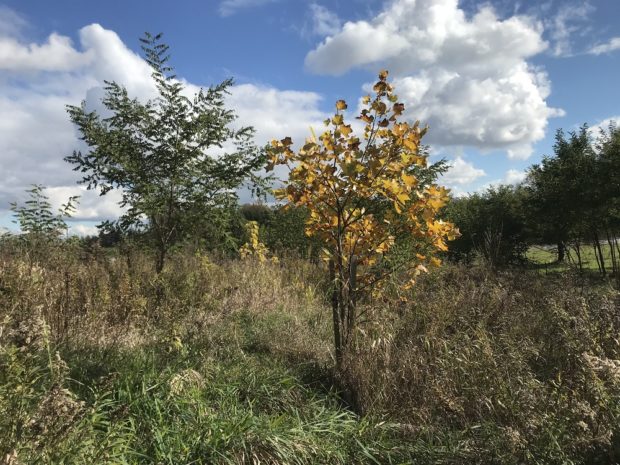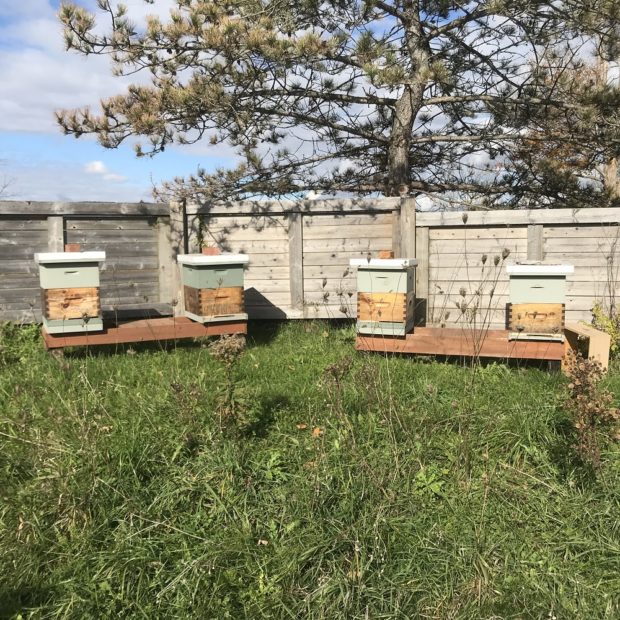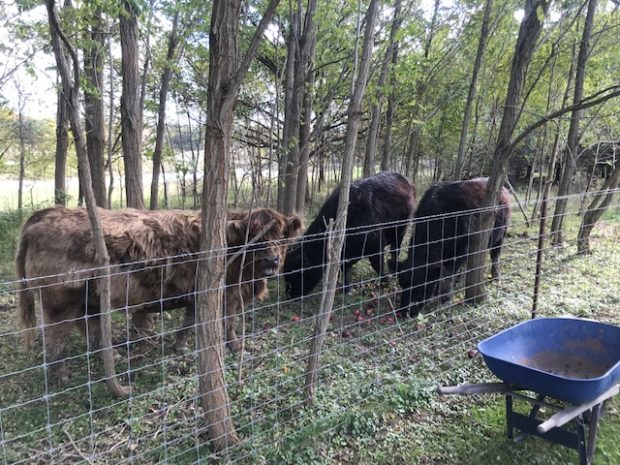Steven Gleave’s 100-acre farm in Ancaster brings together flora from both Canada and the US for a memorable and beautiful place.
The farm includes 50 acres of old Carolinian forests, with trees that originate in the southeastern United States and reach into Canada on the north shore of Lake Erie.
It’s home to many types of wildflowers such as the Trillium (Ontario’s provincial flower) and trout lilies. In early Spring, snowdrops appear — flowers not usually found outside of the forest.
With a mix of trees, fruits, flowers, bees and livestock, it’s a special and robust farm full of possibility.
Rare trees
Stephen Gleave’s farm is in Ontario, which was heavily logged in the 1800s, devastating many of these Carolinian forests. Some farmers, however, kept 20 acres of forests so that they had ready access to firewood, but this led to a decline in many other types of trees, wildflowers and wildlife.
Stephen feels that it’s vital that Carolinian forests are grown out and reconnected across farms. Many people are discovering local nurseries that specialize in growing antique Carolinian trees, which are cheap and easy to plant in the Fall or Spring.

As part of these reforestation efforts, Stephen is growing new forests with Tulip trees, Kentucky coffee trees, Lynden trees, Red Buds, oaks and beeches and other antique trees of the forest system.
These trees are planted and left to grow in a fenced-off part of Stephen’s farm to keep out deer and cattle.
Diverse fruits
Stephen also maintains a large orchard of plum, apple, pear and cherry trees. Today, most of the world’s commercially grown apples come from just a handful of varieties. But with a small orchard on your property, you can begin to diversify the kind of fruits — and that’s exactly what Stephen has done.
In good years, Stephen donates about 2,000 pounds of apples to a food shelter. Generally, clients love the apples but some have complained about their appearance, likely because they’re used to commercially grown fruits. Stephen tries to only provide the shelter with shapely, pleasing apples.
Bees and cattle
Stephen also raises animals on his farm. He has Scottish Highland cattle who love his apples, but only red ones, like a McIntosh, a Canadian apple that originated out of eastern Ontario. If you offer them a green or yellow apple, they’ll turn their noses away.

Stephen is able to maintain such an expansive fruit orchard — and keep his cattle fed — because he also raises bees, which pollinate his fruit trees. The bee hives are placed in a fenced-off area so they can have access to the pollen the trees provide. The Tulip Tree and Lynden trees are great for pollen, and they provide shelter for the bees during the winter months and from the north wind.
The benefits of farming
The pandemic has presented a great opportunity for people who work in the city to buy a farm and connect themselves and their children to nature, all while maintaining their urban jobs and connections. The family farm is not just an economic activity — in the end it turns out to be an important lesson on how to live, how to be part of nature and how to respect our environment.
The world could benefit greatly from the kind of trees raised on farms like this one. Trees of all kinds serve as an excellent retardant to pollution, since they make their food from carbon dioxide and can hold dust, ash, pollen and smoke, which can be damaging to not only human lungs, but other animals as well.

At the same time, forests are incredibly helpful in supporting their physical surroundings. Forests control flooding and prevent soil and wind erosion, while also providing habitat for wildlife. The latter is especially important in today’s world, where development continues to encroach on living spaces of animals.
Then there’s the benefits forests offer to people. Many studies have found that spending time in nature is incredibly nourishing for humans. An hour stroll through a forest can reduce your blood pressure and stress.
This isn’t the same as just taking a walk around a city block, with its noisy cars and flashing lights and chattering neighbors. There’s something restorative about being surrounded on all sides by the natural world.
The post Stephen Gleave’s forest wonderland appeared first on YourAmazingPlaces.com.


No comments:
Post a Comment